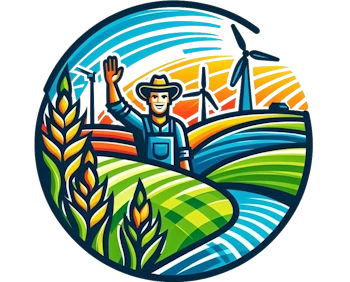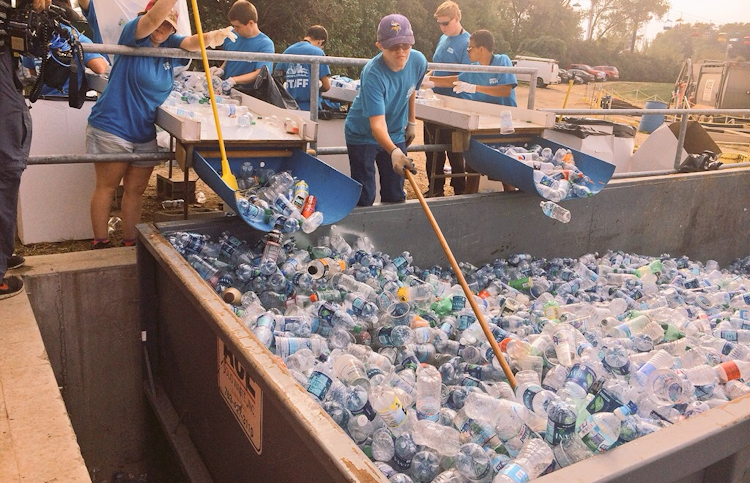The state of Minnesota, beloved for its natural beauty, plentiful water resources and a wide range of ecosystems in part because it is home to the unofficial motto “Land of 10,000 Lakes” now looks at waste management with a new eye.
As the state has enormous pollution problems, with vast potential to degrade its environment and public health as well as stunt growth of some key sectors in economy. Industrial activities, agricultural waste and urban development are among the sources of this pollution problem.
Water Pollution
Water pollution: One of MN’s most serious environmental issues, the problem that covers all, or at least many, lakes and rivers as well groundwater in Minnesota.
Agricultural Runoff
While essential to the economy, agriculture is also one of Minnesota’s largest sources for water pollution. This release of nutrient-rich agricultural runoff into waterways often fosters the phenomenon known as eutrophication. This over-fertilization results in the excessive growth of algae that consumes oxygen and kills aquatic plants, creating underwater “dead zones.” Agricultural runoff has long compromised water quality in the Minnesota River Basin, which is among one of their hardest-hit regions.
Industrial pollution and urban
For example, industrial activities account for water pollution in locations where much of manufacturing occurs heavy metals and chemicals discharged into rivers and lakes from factories. This issue is exacerbated with urban areas as stormwater run-off flushes oil, pesticides and other pollutants off streets and lawns into water bodies. In Minnesota, the Mississippi River has been heavily affected by industrial and urban pollution for over 1000 miles before finally meeting a series of locks to Tom Lee Park.
Mining Pollution
The state of Minnesota is home to an extensive history with toxic water issues, sites like the contested polymet sulfide mining proposal in Hoyt Lakes have existed for 30 years or more.
Pollutants such as mercury, sulfates and heavy metals can escape into close by waters from tailings and waste dumped off mining operations. That is of special concern in the northeastern part of Minnesota, where copper-nickel mining projects have sparked fears about toxic metals leaching into the Boundary Waters Canoe Area Wilderness.
Air Pollution
Another important environmental issue facing Minnesota with public health and environmental impacts is air pollution.
Transport and Industrial Emissions
Transportation is the biggest contributor to air pollution in Minnesota, including pollutants such as nitrogen oxides (NOx) particulate matter (PM) and volatile organic compounds VOCs. The pollutants that make up ground-level ozone (a key ingredient in smog) can cause respiratory issues, especially among young and elderly populations. Factories Autocratic such as powerplants factories also add to the pollution of air by releasing other more hazardous chemicals pollutants one them is sulfur dioxide (SO2) and carbon monoxide (CO).
Wildfire Smoke
Over the last few years, Minnesota has seen more air quality problems as a result of wildfire smoke in part due to fire activity originating from Canada or other parts of the western US. These smoke events produce high levels of particulate matter highly toxic and harmful to health, particularly for those with pre-existing respiratory conditions.
Climate Change and Air Quality
Yet, air quality departments in places like Minnesota are experiencing a paradox: the good news is that with environmental mitigation and regulation over prior decades has reduced some emissions overall; unfortunately however it turns out for reasons current climatic changes bring more polluted clouds of North American industrialization to this region now on top from further-downwind.
Ground-level ozone can be exacerbated by higher temperatures, and air quality degraded through increased wildfires with more frequent or extreme weather. Addressing long-term, global climate change is critical to ensuring clean air and the state’s actions have led the way in reducing greenhouse gas emissions.
Soil and Land Pollution
In Minnesota, soil pollution is largely the developmental activities in industries and careless waste disposal practices by society.
Contaminated Sites
Across Minnesota, pollution left behind by the industrial activities of past generations has contaminated tens-of-thousands of sites – often called brownfields. Typically, these sites contain hazardous substances such as lead, arsenic and petroleum products. A significant barrier to redeveloping these areas is the high costs and deterrence of uncertainties associated with cleaning up contaminated sites.
Pesticides and Fertilizers
The widespread use of pesticides and fertilizers in agriculture not only degrades water quality, but also pollutes the soil. These substances remain there and affect the fertility of soil, crops may also get contaminated as well as groundwater.
Waste Management
Soil pollution in Minnesota is also driven by improper waste disposal (including illegal dumping and inadequate landfill management) and excessive dumpster rentals. If not managed correctly, these landfills may release hazardous chemicals into the ground while seeping from contaminated soil areas and threatening human health hazards as well as environmental degradation. If you want to rent a dumpster to discard your waste, only use a local reputable junk disposal company.
Dealing with Pollution: Major and Minor Solutions
Minnesota has implemented several approaches to combat its pollution problems, but additional measures are needed in order to safeguard the state’s natural resources and public health.
Enhancing Farming Practices
Minnesota is working to reduce agricultural runoff by advocating for sustainable farming practices like cover cropping, decreased fertilizer consumption and buffer zones surround waterways. These practices can greatly diminish the amount of nutrients that become runoff, and in turn improve water quality. For example, programs such as the Minnesota Agricultural Water Quality Certification Program aim to inspire farmers with incentives and protect water through implementation.
Increasing Regulation And Enforcement
Industrial emissions and waste water discharge should be controlled by stronger regulation, as well enforcement. That means making industries install cleaner pollution control technologies, imposing tighter standards for pollutants and enforcing industry adherence to environmental rules. Although the Minnesota Pollution Control Agency (MPCA) is responsible for monitoring and regulating sources of pollution, it needs authority and adequate resources to continue being operational.
Investing in Renewable Energy
Minnesota could cut its power plant air pollution by approximately 80 percent and greenhouse gas emissions by more than one-third with the use of renewable energy sources, such as wind and solar. While the state has taken important steps in these directions, more investment and policy support will be required to achieve clean energy objectives as well as mitigate impacts of climate change.
Comments pertaining to public awareness and education
To maintain the environment, it is important that people are made aware of the pollution problems as well encouraging community participation. Educational campaigns that teach residents about the origins and consequences of pollution, along with tips on how they are able to lessen their environmental footprint can inspire more sustainable behaviors.
Pollution within Minnesota is a large issue that must be resolved because of the impact it has on our state’s environment and public health. Steps to tackle these problems are being sought, but robust regulatory policy and practice at scale combined with active public engagement is required Facing these pollution problems straight-on is the best way to protect Minnesota’s resources and secure a cleaner, healthier future for all stakeholders.

